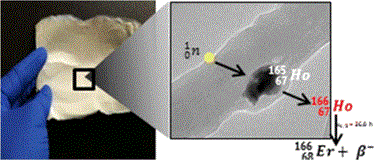Radiotherapeutic Bandages Offer Wearable Skin Cancer Treatment

University of North Texas (UNT) scientists have developed a radiotherapeutic bandage that can be placed over squamous cell carcinoma (SCC) lesions, and early testing on animals shows the technology can completely eliminate tumors within weeks. Researchers believe the bandages could be a more individualized and convenient cancer treatment option.
SCC tumors are less lethal than melanoma, but far more pervasive. Often the result of unprotected sun exposure, SCC occurs in the upper layers of skin. The Skin Cancer Foundation (SCF) estimates that 770,000 people are diagnosed with SCC in the U.S. each year, and between 3,900 and 8,000 patients die. Though most cases can be cured with early intervention, the elderly and immunocompromised patients are particularly at risk, said the American Cancer Society.
The current treatment method for SCC lesions is surgical removal followed by localized radiation to get rid of whatever cancer cells might have been left behind. These procedures require cumbersome equipment and specialized facilities, which are not always convenient for patients. Anthony Di Pasqua, assistant professor at the UNT College of Pharmacy, led a team of researchers in the development of a wearable patch, a possible alternative in cases where surgery was not entirely successful or was not possible.
Di Pasqua’s goal was to create a minimally invasive alternative that optimized both cosmetic and functional outcomes. His team used electrospinning — a process that produces thin fibers from liquids — to combine radioactive holimium-166 (166Ho) with polymer solutions to create flexible non-woven bandages.
The team’s study — published in Applied Materials & Interfaces — tested the bandages on mice for one hour a day for fifteen days, and found that 3 out of 10 mice had their lesions completely eliminated, while the remaining seven mice receiving treatment had their lesions significantly reduced in size compared to the control group.
According to researchers, the radiation is not activated until the bandage is ready to be applied to the skin. The amount of radiation per bandage can be individually tailored to suit each patient. Furthermore, the bandages can be trimmed down to fit individual lesions, so as to cause minimal damage to surrounding healthy tissue.
“These bandages can be individually tailored for easy application on tumor lesions of all shapes and sizes, and manufactured on a large scale,” said Bhuvaneswari Koneru, a graduate student on Di Pasqua’s team, in a press release.
In addition, the study authors reported that — once activated — the bandages do not leak radiation, so they pose little to no health risk to healthcare providers.
When presenting its research at the American Association of Pharmaceutical Scientists Annual Meeting and Exposition, the team said its next step would be to try the technology on larger animals to verify its clinical relevance.
